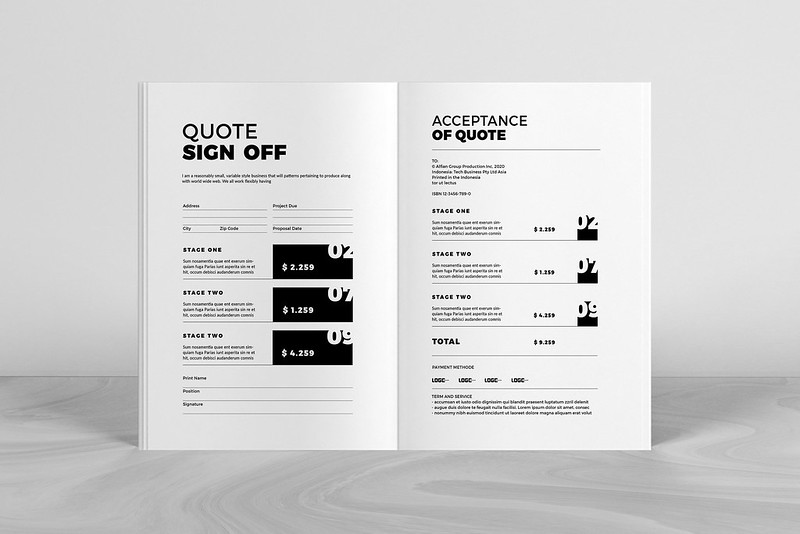Most agencies, regardless of industry, rely on proposals to win sales. They create a multi-page proposal outlining their services and plan of work, summarize their statements with an outline of services provided and costs, and hope to get a client signature that allows them to begin work.

If these proposals aren’t compelling, they aren’t going to win sales. If they aren’t consistent, their effectiveness won’t be measurable. And if they aren’t created or distributed efficiently, they could end up wasting time and stifling agency growth.
Fortunately, there are a number of strategies that agencies can use to improve their proposal processes.
Identify Your Goals
Before you start trying to improve your processes, you’ll need to understand what “improvement” means to you. What are you hoping to accomplish by changing how you design and issue proposals? There are several goals you could have, including:
- Time spent on proposals. Are your salespeople spending too much time on writing and sending proposals? If so, you’ll need to find ways to increase the efficiency of the process.
- Proposal close rate. The main point of a proposal is to help you close a sale. Your main goal could be to make your proposals more effective to your target customers.
- Proposal consistency. If you have a large team of salespeople, it’s easy for your proposals to become inconsistent. Nailing the consistency of your proposals, across the entire team, could be your main priority.
- Distribution and management. Sending, collecting signatures, and managing your proposals could also be a problem—especially if you’re losing track of proposals during the process.
How important are these priorities, relatively speaking? Are some more important than others?
Work From the Right Templates
One of the best things you can do is choose the right agency proposal template, or a series of templates your team can use reliably. It’s unwise to find one template and use it blindly for everything, but it’s also unwise to create new proposals from scratch every time you need one. Customizing a dynamic template will help you save time when creating new proposals to issue, and simultaneously help you improve consistency across the board.
Spend time getting a “core” template perfected, then train your salespeople to use it. From there, you can develop a branching series of other templates for your other services (or combinations of services).
Keep Things Consistent, but Personal
It’s important to keep your proposals as consistent as possible; this will allow you to accurately measure your results and conclude the effectiveness of your work. However, it’s important not to be too consistent. If your templates read as robotic, or if they’re designed generically, they aren’t going to specifically appeal to your new customers and prospects.
Make sure you have points of customization you can tweak to fit the needs and perspectives of your individual clients. Depending on the situation, this could mean offering different items, addressing a client’s pain points specifically, or even changing the tone of certain sections.
Train Creators on Best Practices
Next, you’ll need to invest time on training your salespeople on how to make your proposals more effective. Without clear direction, they either won’t know what to do, or they won’t be on the “same page” about your company’s directives. Teach them which sections should be edited, which ones should remain the same, and how to send and track proposals in whichever system you use.
Measure Results
It’s impossible to determine whether your current proposal strategy is effective unless you have objective data to inform you. Therefore, it’s in your best interest to try and collect those data. Measure the time it takes for individual salespeople to create and customize proposal template. Keep track of the open rates and final success rates of each of your proposals. Which qualities do your most successful proposals have in common? Are there variables that don’t appear to be helping you?
Get Feedback
Along similar lines, it’s important to gather both internal and external feedback about your proposals. If and when a client rejects your proposal, ask them why. Were there certain points that were unclear or confusing? Did they end up going with a competitor, and if so, what did they like about their proposal? You won’t get an answer from every rejection, but any answers you do get could help.
Similarly, ask your salespeople what they think about your templates. If most of the team seems to agree that the introduction is weak, you’ll know what you need to adjust.
Tweak and Improve
It takes time to perfect your proposal strategy, and no single change will get you there. Instead, you’ll need to commit to a series of small tweaks and changes, iteratively getting your proposals in more efficient, higher-closing shape.

